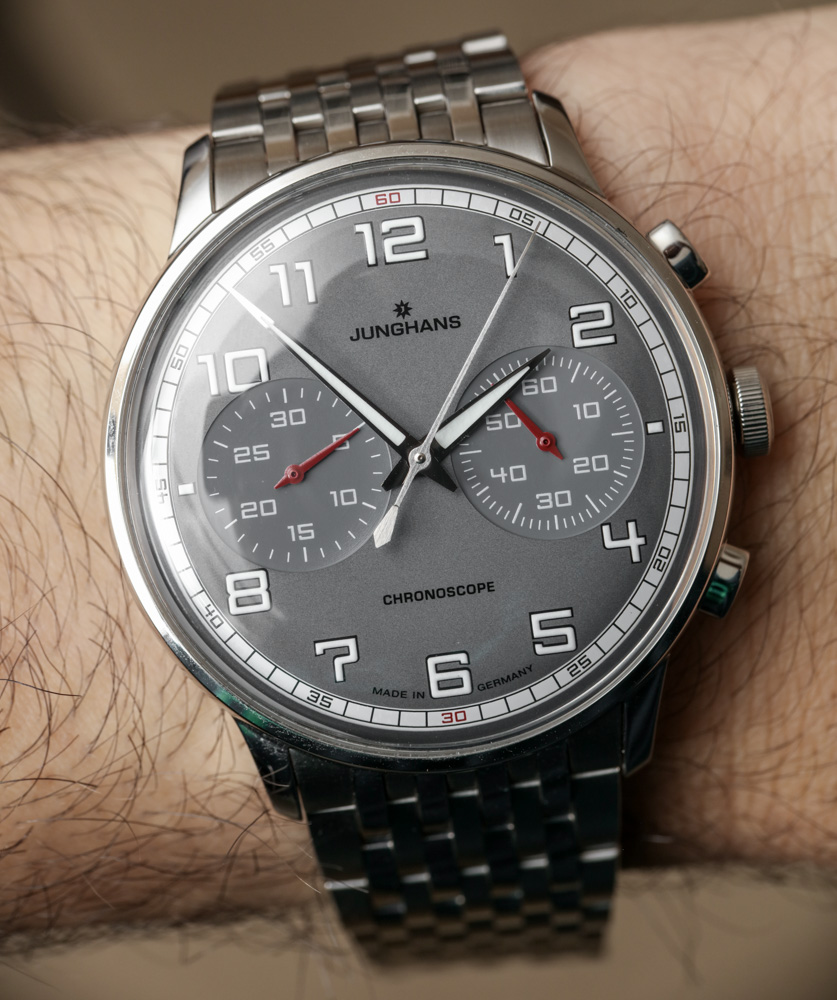
I’ve always thought that Germany-based watchmaker Junghans was underrated by timepiece enthusiasts. This is probably because of their German sentiment to marketing and communication – which more or less means no marketing or communication. But what you get in exchange is a wonderful attention to the product, as well as pricing which more often than not is rather fair (relatively speaking). These are high-end mechanical watches after all. Today I am reviewing the Junghans Meister Driver Chronoscope watch, which is a newer model from the brand.
The Meister Driver Chronoscope fits in somewhere between the brand’s other chronograph watches in the Meister and Chronoscope collections, which can actually get a bit confusing when it comes to their names. There is the Junghans Meister which has a chronograph. There is the Junghans Chronoscope which has a chronograph. There is the Junghans Meister Pilot which has a chronograph, and as of yet, there is no Meister Diver Chronoscope to fully round out the collection for diving watch enthusiasts. Oddly enough, the brand doesn’t seem to actually have any diving watches.
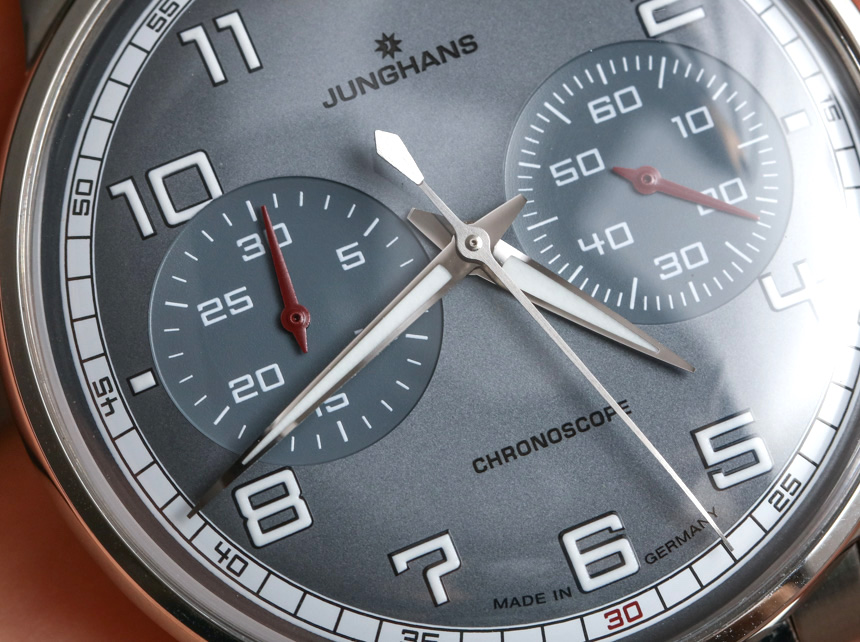
Junghans honestly has a lot of watches I’d like to review, and I say that they are underappreciated by watch enthusiasts not only because of quality and value, but also because of design. The brand really has a healthy variety of truly nice timepieces, and they also happen to have the rights to the Max Bill name, and produce a lot of truly iconic mid-century modern minimalist watches. Even in their non-Max Bill watches, you can see a tendency to prefer slick, yet functional designs that don’t have a lot of extra and unnecessary embellishment.

The Junghans Meister Driver Chronoscope is meant to be a classic car themed automotive chronograph. It has a mature and friendly sportiness to it which is both refined and non-threatening. There is no brazen machismo or overt aggression in pretty much any of the Junghans watches, and the Meister Driver Chronoscope nicely embodies those design values very well.

Pretty much everything in the design is “reasonable” as well as intentional. Everything has a purpose and there is little to nothing which isn’t needed. Junghans presents a refined mixture of shapes and aesthetic harmony rather than try to wow onlookers with novel designs. While some of the watches can be claimed to lack a little modern excitement, they are wonderfully classic in their appeal, and just what the doctor ordered for those seeking more conservative timepiece designs and ownership experiences.
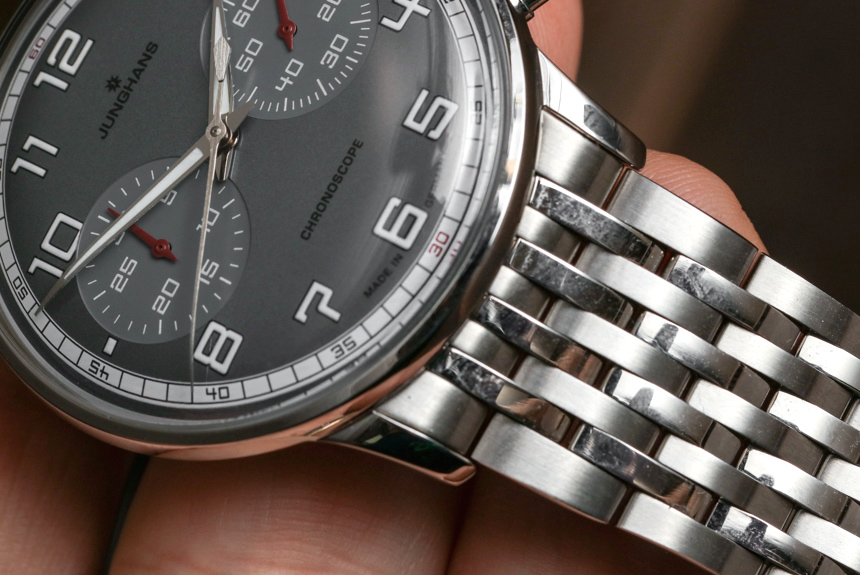
Currently, the Meister Driver Chronoscope is offered by Junghans in a few different versions. The faces are available in the pictured reference 027/3686.44 in gray, as well as a dark black/gray, and also as a two-tone “sand” beige color. Attached to the Meister Driver Chronoscope is either a fitted leather strap or this handsome nine-link steel metal bracelet. Being a bracelet guy, I of course, opted for that option.
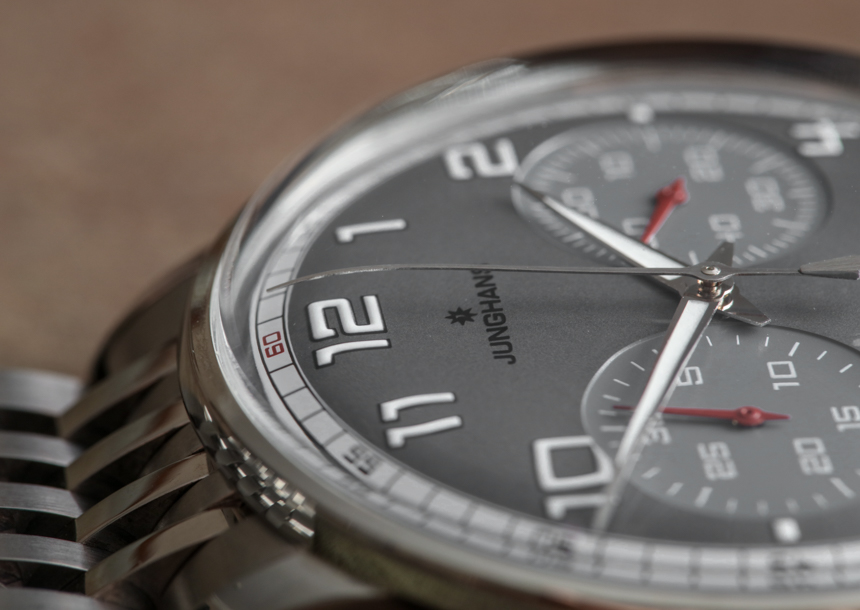
There are a few interesting quirks in this watch that potential buyers should know about. The most major of which is the crystal, which is not sapphire as you might expect. Rather, Junghans gets a bit retro-nostalgic and uses a highly domed plexiglass crystal with a SICRALAN coating. The most common watch to use a similar crystal is the Omega Speedmaster Professional Moonwatch. This was a popular material for crystals before sapphire, and is generally no longer used because of its susceptibility to scratches. So why use a plexiglass crystal?
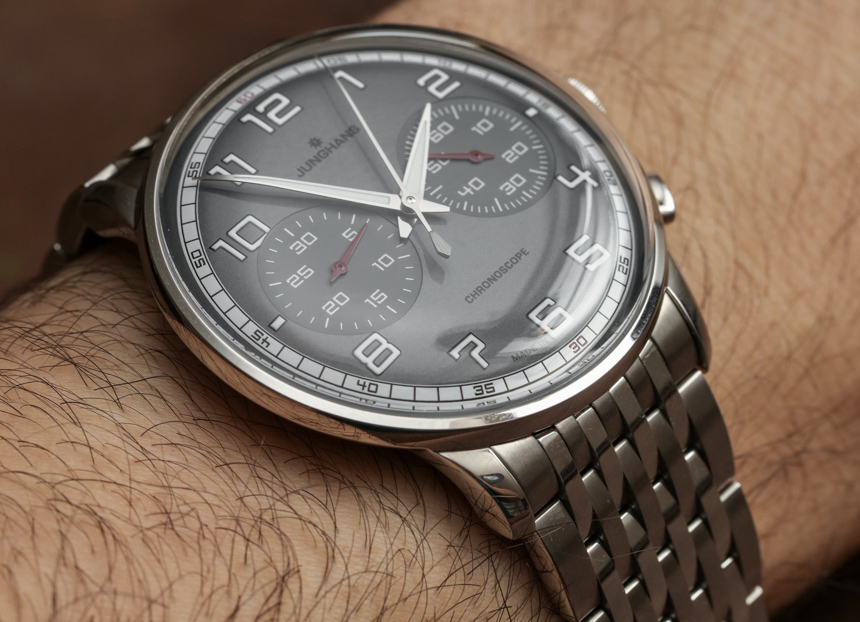
One reason is the way it interacts with the light. Many people argue that the view of the dial through plexiglass is a bit “warmer” than sapphire crystal – and to a large degree this is true. With that said, the effect is subtle at best. A more practical reason is that you can achieve much more dramatically domed crystals in plexiglass than sapphire crystal without as much visual distortion. I think this is because the plexiglass ones are easier to shape and thus suppliers have more control over it – though I am not entirely sure. What I do know for a fact is that if this watch had the exact same style and shape of crystal in synthetic sapphire, versus plexiglass, the price would jump up a lot.
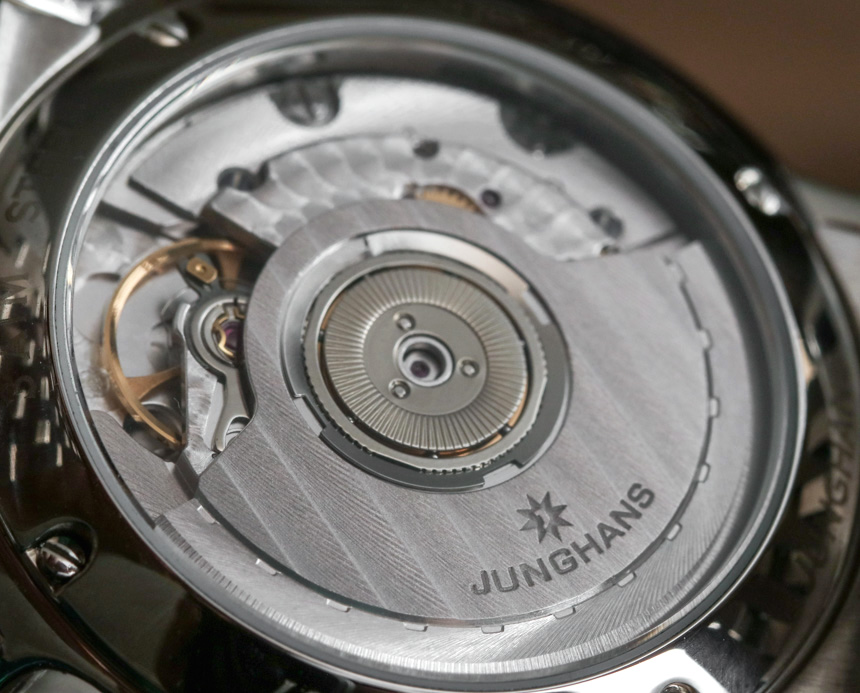
The rear of the watch has an exhibition caseback with a view to the movement, but that crystal is also not sapphire – but rather mineral crystal. Given that this crystal is flat and not prone to scratching, that doesn’t matter much. Oh, and what happens if the plexiglass crystal scratches? The good news is that it is relatively cheap to replace. You merely need to endure the long wait times and often high service costs associated with modern day mechanical watch repair. It’s just that simple.
